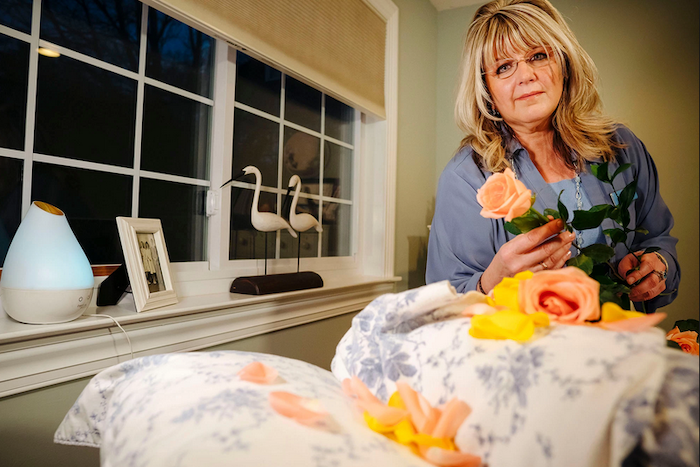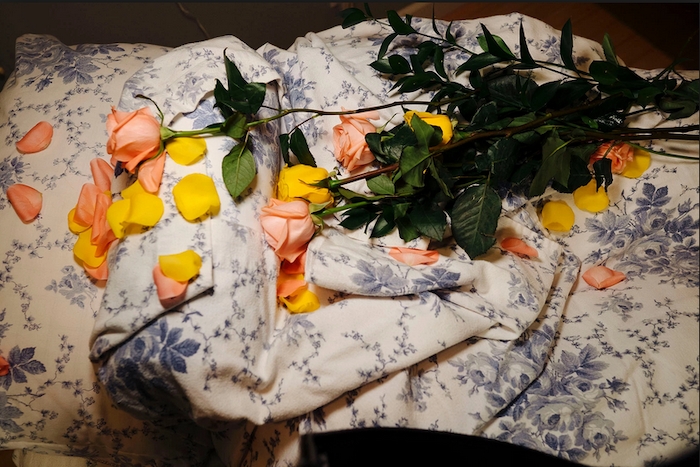
After her 52-year-old husband died of the flu in 2014, Susan Capurso from Long Island, New York was left feeling helpless, angry and unsupported.
“We weren’t prepared at all,” says Capurso, who had been married for 25 years. “We didn’t have hospice, as my husband’s illness was not a long-term one. At the end, there was no one standing next to me saying ‘this is what is happening now. He’s going to pass within hours and this is what to expect.’ I’m detail-oriented, I wanted to know.”
Interested in offering non-medical, holistic and emotional support to the dying and their families, Capurso began to research the work of an end-of-life doula. Traditionally, a doula is a layperson who aids a woman in childbirth and newborn aftercare alongside medical staff. In the same way, end-of-life doulas are supportive to hospice; they do not take the place of it.
To further her interest in this growing field, Capurso began volunteering for a hospice and enrolled in the certificate-bearing Doulagivers training school of New York City (DoulaGivers.com), a school started by Suzanne O’Brien, formerly a hospice and oncology nurse.
O’Brien was inspired when, on a trip to Zimbabwe in 2012, she saw how local people were trained to sit with a person who was dying and “guide” them through their journey. While the country lacks basic needs and medicinal care, “they did have neighbors sitting with a family member who is dying — holding that space for them,” says O’Brien. “The power of presence might be the most powerful medicine we have, but we’ve lost that in our health care system. We’re all in this together. We should support each other however we can.”
On O’Brien’s course, “training is individualized,” says Capurso. “Weekends are spent with [O’Brien] and everything else is done online through a series of live webinars and modules.”
The three-pronged curriculum covers end of life phases from diagnosis to stabilization, transition and disease process. Elder care assistance and advanced directive (when a patient determines their end of life wishes while they are still able to do so) is also covered.
“This covers the important papers you really need to button up, such as health care proxy, living will, do not resuscitate,” says Capurso.
Practical help is also part of a doula’s workload.
“We come into homes, prepping meals for the week, doing laundry and going through each room to ensure it’s safe,” says Capurso.
Beyond these basics, Capurso extends her healing work to include the creation of a legacy book with patients.
“It’s something we work on together. We go through your life, adding personal stories, photographs and memories,” says Capurso. “It’s not just something you’re leaving for family and friends, it really is therapeutic — bringing light, love and closure.”
Helping patients to compose letters to loved ones and assisting families with writing memorials and eulogies are also customary tasks.
Having your “funeral” before you die is another trend that doulas can help with.
“Why not have a memorial before you go?” says Capurso. “Let’s laugh, say our goodbyes and be happy. It doesn’t have to be scary. A celebration with the dying person there shapes the person’s life and offers closure.”
Carrying out a dying person’s wishes is also a top priority for Capurso.
“I can help find a way for the last days to meet a dying person’s desires. Maybe starting to contact family members to come in for a final visit, asking them to write a memory down on a card and placing it in to a basket, incorporating nice music, candles or aromatherapy,” says Capurso.
This line of work is especially well-suited for hospice volunteers who want to do deeper work, as well as healers, reiki practitioners, massage therapists and acupuncturists. It’s also beneficial to have a genuine interest in educating the community on the resources available for them.
“You don’t go looking for this career, it calls out to you,” she says.
The demand for such caregivers is overwhelming. By 2020, an estimated 117 million Americans will need some caregiver assistance.

“Doulas fit in to the personal companion model, which is a billion-dollar industry serving our elder population,” says Deanna Cochran, RN. Cochran is the founder and CEO of Quality of Life Care, LLC, in San Marcos, Texas, an end-of-life training and certification agency. She’s also the first chair of the End of Life Doula Council within the National Hospice and Palliative Care Organization.
“The dying have specific needs and fears that need addressing,” she says. “As we evolve, the field is ripe for training people to be skillful at this — it’s a movement that’s growing. There’s plenty of room for every single hospice in this country to have at least one part-time doula. Within the next 10 to 15 years, opportunities will also become prevalent at nursing homes and assisted living centers.”
Fortunately, training is more prevalent now.
“There are over 10 certification programs, ranging in price from $700 to $2,500,” says Cochran, who offers a fast-track, 16-week program. “You can learn the skills, but you need to do the work by volunteering through hospice, nursing homes, hospitals. There’s an art to it.”
Complete Article ↪HERE↩!
